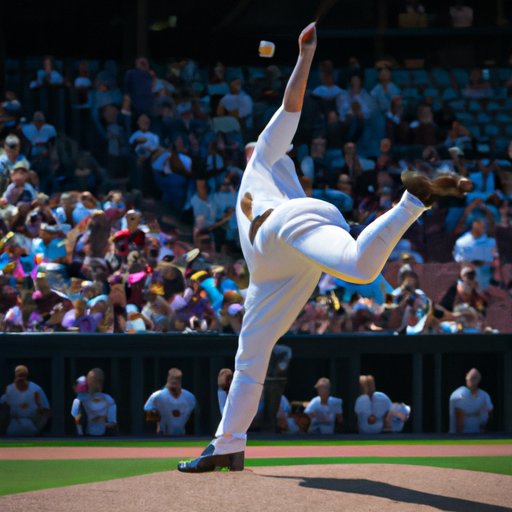Introduction
Baseball is a sport where individual accomplishments are celebrated just as much as team victories. One such accomplishment that has gained significant attention and appreciation over the years is the “Immaculate Inning.” In this article, we will explore what an immaculate inning is, its importance in baseball history, and the psychological impact of accomplishing this rare feat.
What is an Immaculate Inning?
An immaculate inning is when a pitcher strikes out all three batters in an inning, using only the minimum nine pitches possible. This means that each batter is out on just three pitches, with no balls or fouls. The pitcher has to have incredible accuracy and easily deceive the opposing batters to achieve this rare accomplishment.
An immaculate inning is an extremely rare occurrence in Major League Baseball, with only a small handful being achieved every season. Some of the most well-known pitchers who have accomplished this feat include Lefty Grove, Sandy Koufax, Randy Johnson, and Max Scherzer.
Throwing an immaculate inning is considered a highly prestigious accomplishment in the baseball world, and it’s a testament to the pitcher’s control, skill, and agility. It’s an impressive feat that draws admiration from fans and critics alike.
The History of Immaculate Innings
The term “immaculate inning” is relatively new and was first coined in 1999 by baseball historian Bill James. However, the accomplishment itself has been around for over a century. The first known instance of a pitcher striking out three batters in an inning without allowing a ball or hit was in 1889 when John Clarkson of the Boston Beaneaters did it.
Over the years, the term has gained popularity and recognition, becoming a benchmark of pitcher’s prowess. The accomplished has been enshrined in baseball history and has become a rare yet prestigious achievement.
The Odds of Throwing an Immaculate Inning
The likelihood of a pitcher throwing an immaculate inning is extremely small. Despite its rarity, immaculate innings have become more frequent in recent years. By 2019, there have been 101 immaculate innings in MLB history. Among active pitchers, Max Scherzer leads with three immaculate innings.
The odds of a pitcher throwing a perfect game (no hits or base runners) are much lower than those of throwing an immaculate inning. The reason being that the pitcher has to retire more batters. However, they both are incredibly rare occurrences that demonstrate a pitcher’s precision and ability to control the game.
While there is no clear formula for what makes a pitcher capable of throwing an immaculate inning, they all have one thing in common: impeccable control and an ability to deceive the batter. Pitchers with high strikeout rates and strong control have statistically better chances of throwing an immaculate inning.
Psychological Impact of Throwing an Immaculate Inning
As rare as they are, immaculate innings have a significant psychological impact on pitchers. Pitching is a game of power and mental agility, and throwing an immaculate inning can provide a boost of confidence for the pitcher throughout the game and beyond.
Immaculate innings are often achieved in high-pressure situations, like a tied game with the bases loaded. Throwing an immaculate inning can provide the pitcher with a sense of immortality and assists them in gaining momentum. It can prove to be the turning point of the game.
The impact of the immaculate inning isn’t limited to the pitcher. It has a profound effect on the opposing team and fans. Being struck out on just three pitches without even touching the ball is a demoralizing experience for the batter and their teammates. It confounds fans who are trying to figure out what just happened.
Immaculate Inning vs. Other Rare Pitching Feats
The immaculate inning is often compared to other notable pitching feats, including the perfect game and no-hitter. While all three are significant accomplishments, they have some critical differences.
A perfect game is where the pitcher retires all 27 batters without allowing anyone to get on base, whereas a no-hitter is where a pitcher allows no hits during the entire game. The difference between the perfect game and the immaculate inning is that the immaculate inning is an achievement that occurs within a single inning. In contrast, both the no-hitter and the perfect game cover the entire game length.
Another significant difference is that throwing an immaculate inning takes an impressive show of control, agility, and deception in a single inning. In contrast, throwing a no-hitter or a perfect game requires maintaining this level of control throughout the entire game.
Conclusion
Immaculate innings are a rare yet incredible feat in baseball history. They require exceptional skill, agility, and precision. Since it was first achieved over a century ago, the accomplishment has gained prestige and recognition, with only a handful of pitchers achieving it each year. For pitchers, throwing an immaculate inning can boost their confidence, provide momentum, and even change the course of the game. It is a testament to baseball’s rich history and an impressive accomplishment that will continue to be celebrated for many years to come.
